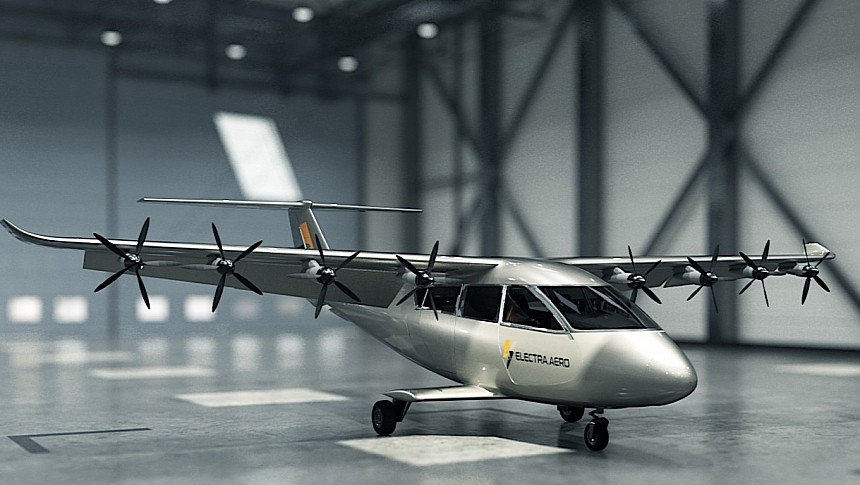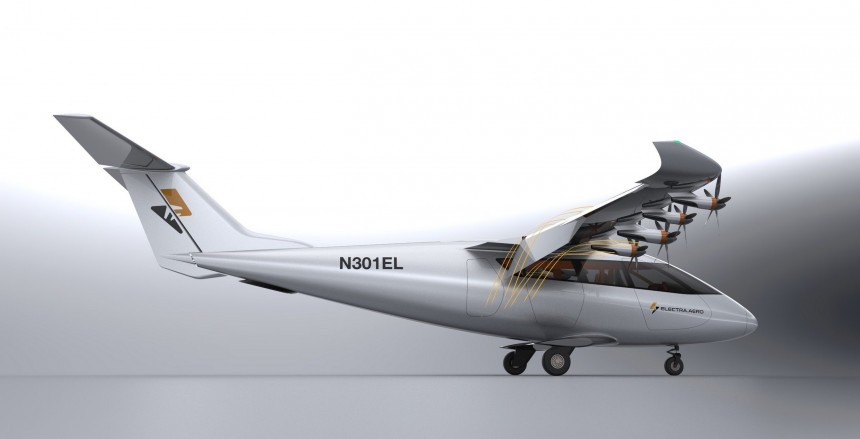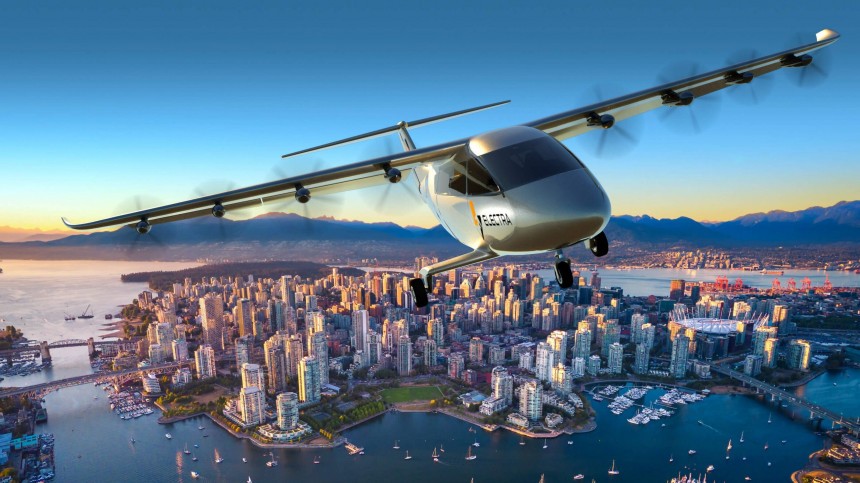In the time it took you to read this far, the transportation industry probably made another leap forward. Whether we're talking about cars, boats, or airplanes, they are all undergoing transformations so big that we'll soon not be able to recognize them.
Just take a look at what's happening in the aviation industry to know what I mean. Not only do the legacy companies involved seem to be chasing major change (through new aircraft design, engines, or fuels), but we also have a flood of startups that seem determined to upset both aviation and road transportation.
Many of these newcomers are going the way of the vertical take-off and landing (VTOL) aircraft, because of their clear advantages. They are small enough to operate in cities for local travel, they are (most of them, at least) electric, so they do no direct harm to the environment, and they need little infrastructure – after all, they do take off and land like helicopters, behaving like airplanes solely in between those two actions.
That and a lot of many other factors are what made most of these startups focus on VTOLs. But an American company thinks it knows better, so it proposes something that can only be described as an STOL.
What's that, you ask? The acronym stands for short take-off and landing, and just like the name says it designates an aircraft that needs a bit of horizontal space to lift off. But other than that, not much is different. It's like a regular airplane met a VTOL and they had a baby.
The company's name is Electra (founded in 2020), and the STOL, well, that one does not have a name of its own (yet). The aircraft looks a lot like the VTOLs we know and love, with a short and stubby body dangling underneath a wing resembling the ones on high-wing aircraft of our day.
On each side of the body, the wing holds no less than four propellers, spun by electric motors. We're not given any details on how powerful the motors are, or how capable the battery that feeds them, but we do have access to a few numbers that may give us a sense of what the Electra STOL is all about.
The thing has been designed to carry up to nine people and a total cargo weight of 2,500 pounds (1,133 kg). With this much on, the STOL can travel at speeds of 200 mph (322 kph), and can keep going for as much as 500 miles (805 km).
All of the above is impressive, sure, but it's not something we haven't heard before. Pretty much all of the VTOLs out there can do that, and they also have the advantage they can take off and land from a very limited space.
Why, then, would someone choose to make short take-off electric aircraft when everybody else is doing things differently?
Well, there are a number of advantages to going short instead of vertical, and probably the one that weighed a lot is the fact an STOL does not need to transition to horizontal flight after take-off. That means fewer component parts (fixed wing, for one), and a more conventional, streamlined design.
The Electra is a blown lift aircraft that uses distributed electric propulsion, meaning the slipstream of the propeller interacts with the wing itself to increase lift. It's like tricking airflow into believing it moves over a larger wing than it actually does.
In the case of this aircraft that translates into the ability to lift off from an area as small as a soccer field, meaning a space measuring 300 by 100 feet (91 by 30 feet). The speed it needs to reach for lift to be achieved is just 35 mph (56 kph), and once in the air the thing can stand there no matter the weather conditions.
What's very important is that the Electra does not need any charging infrastructure. Although the exact specifics behind this statement are not revealed, we're told the battery of the aircraft can be recharged in flight.
All of the above sounds great and all, but isn't that something we've heard before and were never able to see come to pass? It kind of is, but Electra seems so serious about it it has already convinced others.
Last week we were informed of the company striking a deal for the sale of 2,000 of these STOLs to with JetSetGo Aviation Services Private, the largest on-demand aircraft fleet operator in India.
The value of all of the company's pre-order contracts is valued at $8 billion, one of the largest (let's call it) market share in the industry. It's unclear what the specifics of this latest deal are, but we do know it's the third such agreement in a string that also includes contracts with Finnish LYGG and American Charm Aviation.
The company has already converted a Cessna 172's wing with the eight electric motors for testing purposes and plans to have a first flight of the nine-passenger prototype next year. FAA certification is expected sometime in 2028, meaning we should be able to see these things taking off from converted parking lots, soccer fields, and perhaps even barges by the end of the decade.
Many of these newcomers are going the way of the vertical take-off and landing (VTOL) aircraft, because of their clear advantages. They are small enough to operate in cities for local travel, they are (most of them, at least) electric, so they do no direct harm to the environment, and they need little infrastructure – after all, they do take off and land like helicopters, behaving like airplanes solely in between those two actions.
That and a lot of many other factors are what made most of these startups focus on VTOLs. But an American company thinks it knows better, so it proposes something that can only be described as an STOL.
What's that, you ask? The acronym stands for short take-off and landing, and just like the name says it designates an aircraft that needs a bit of horizontal space to lift off. But other than that, not much is different. It's like a regular airplane met a VTOL and they had a baby.
The company's name is Electra (founded in 2020), and the STOL, well, that one does not have a name of its own (yet). The aircraft looks a lot like the VTOLs we know and love, with a short and stubby body dangling underneath a wing resembling the ones on high-wing aircraft of our day.
On each side of the body, the wing holds no less than four propellers, spun by electric motors. We're not given any details on how powerful the motors are, or how capable the battery that feeds them, but we do have access to a few numbers that may give us a sense of what the Electra STOL is all about.
All of the above is impressive, sure, but it's not something we haven't heard before. Pretty much all of the VTOLs out there can do that, and they also have the advantage they can take off and land from a very limited space.
Why, then, would someone choose to make short take-off electric aircraft when everybody else is doing things differently?
Well, there are a number of advantages to going short instead of vertical, and probably the one that weighed a lot is the fact an STOL does not need to transition to horizontal flight after take-off. That means fewer component parts (fixed wing, for one), and a more conventional, streamlined design.
The Electra is a blown lift aircraft that uses distributed electric propulsion, meaning the slipstream of the propeller interacts with the wing itself to increase lift. It's like tricking airflow into believing it moves over a larger wing than it actually does.
In the case of this aircraft that translates into the ability to lift off from an area as small as a soccer field, meaning a space measuring 300 by 100 feet (91 by 30 feet). The speed it needs to reach for lift to be achieved is just 35 mph (56 kph), and once in the air the thing can stand there no matter the weather conditions.
What's very important is that the Electra does not need any charging infrastructure. Although the exact specifics behind this statement are not revealed, we're told the battery of the aircraft can be recharged in flight.
Last week we were informed of the company striking a deal for the sale of 2,000 of these STOLs to with JetSetGo Aviation Services Private, the largest on-demand aircraft fleet operator in India.
The value of all of the company's pre-order contracts is valued at $8 billion, one of the largest (let's call it) market share in the industry. It's unclear what the specifics of this latest deal are, but we do know it's the third such agreement in a string that also includes contracts with Finnish LYGG and American Charm Aviation.
The company has already converted a Cessna 172's wing with the eight electric motors for testing purposes and plans to have a first flight of the nine-passenger prototype next year. FAA certification is expected sometime in 2028, meaning we should be able to see these things taking off from converted parking lots, soccer fields, and perhaps even barges by the end of the decade.










